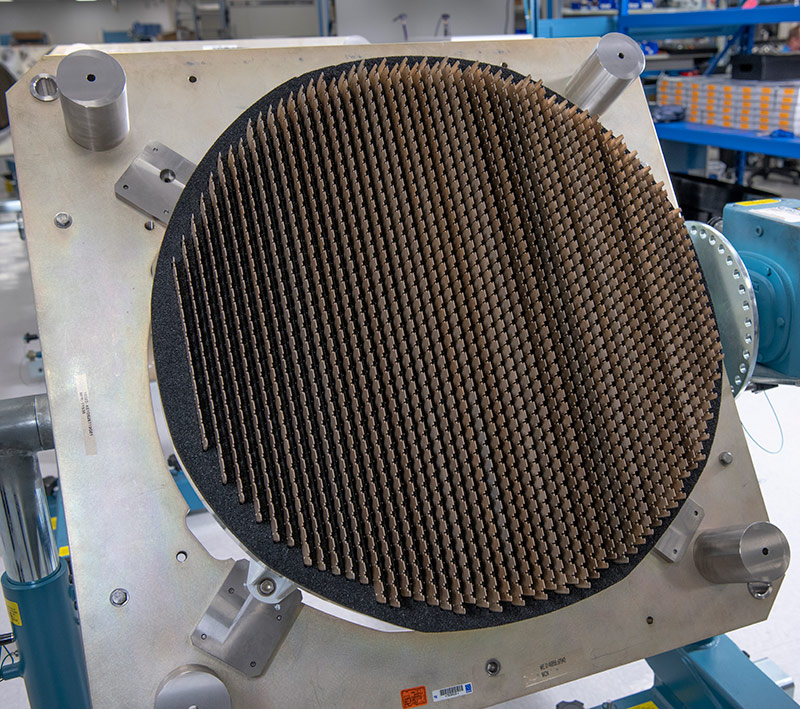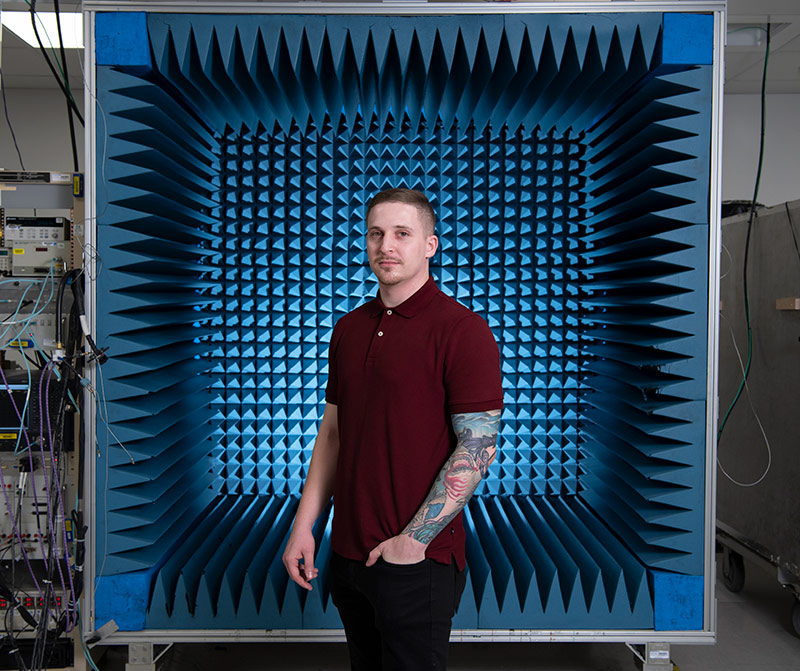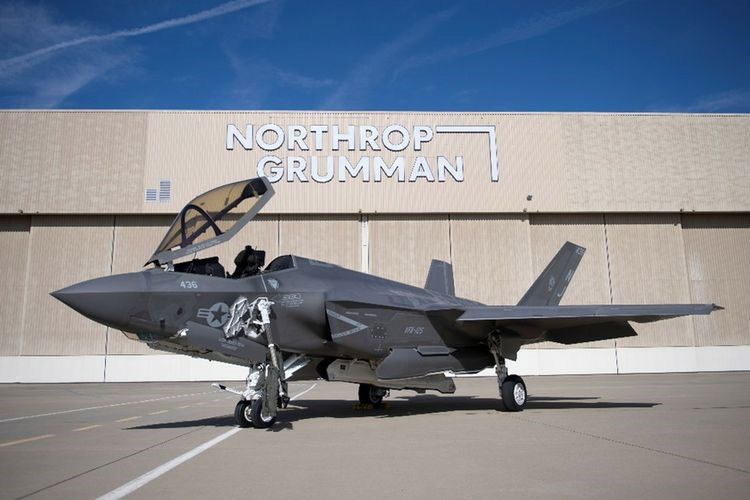AN/APG-81 Active Electronically Scanned Array (AESA)
Unprecedented Effectiveness and Survivability for the F-35

AN/APG-81 and the F-35 Lightning II
The Northrop Grumman AN/APG-81 active electronically scanned array (AESA) is the latest and most capable AESA in the world and acts as the cornerstone to the F-35 Lightning II's advanced sensor suite. The multifunction radar provides unparalleled battlespace situational awareness that translates into lethality, aircrew effectiveness and survivability.
It has long-range active and passive air-to-air and air-to-ground modes that support a full range of air-to-air and air-to-surface missions complemented by stealth features along with significant electronic warfare and intelligence, surveillance and reconnaissance functions.

Combat Proven Capabilities
In air-to air-combat, the AN/APG-81 provides long range capability allowing the pilot to detect, track, identify and shoot multiple threat aircraft before the adversary detects the F-35. This offers a first look, first shot, and first engagement capability.
In air-to-ground combat, this revolutionary, all-weather, precision targeting AESA provides the warfighter with unprecedented situational awareness and detection utilizing its ground and maritime modes. The AN/APG-81 radar can detect, precisely locate, and with aid of its ultra-high-resolution Synthetic Aperture Radar (SAR) mapping mode, can identify and engage military targets with outstanding reliability.

Unmatched Performance
The AN/APG-81 epitomizes the F-35's multirole mission requirement showcasing the robust electronic warfare (EW) capabilities and can operate as an EW aperture utilizing the AESA's multifunction array (MFA). Fully adept at electronic protection (EP), electronic attack (EA) and electronic support measures (ESM) it enables the F-35 the unparalleled capability to suppress and destroy the most advanced enemy air defenses. The Department of Defense recognized the EW capabilities of the AN/APG-81 in 2010 awarding the team the David Packard Excellence in Acquisition Award* for the rapid development and successful demonstration of a quantum leap in EP performance against enemy jammers by a fighter radar.

Generations of AESA Experience
Providing the world's air forces with air-to-air and air-to-ground superiority, the AN/APG-81 builds on Northrop Grumman's wealth of design experience with AESA. Northrop Grumman's mature production environment reflects decades of AESA development spanning many generations. Over this period, Northrop Grumman has continuously improved strong designs and reduced the cost while expanding capabilities. Starting in 1985 with the first generation Ultra Reliable Radar (URR), Northrop Grumman continues its legacy of excellence to this day with active production lines currently producing multiple AESA radars.

Quantum Leap in System Reliability and Affordability
Winner of the world's largest competitive AESA contract, Northrop Grumman's AN/APG-81 was selected in 2001 to be the AESA for the Joint Strike Fighter competition. This program, spanning over two decades, is constantly advancing with a focus on hardware enabled software defined strategy bring increased capability to the battlespace. As of December 2022, over 1000 APG-81 radars have been produced and delivered.
The first of 11 lots of radars have been developed, flight tested, and delivered by the Northrop Grumman Corporation—while reducing production costs by more than 70%. AN/APG-81 AESA's solid-state technology and elimination of mechanical moving parts along with replaceable sub-assemblies have improved product reliability while enabling faster and easier repairs to hardware and software modules which will significantly lower lifecycle costs when compared to legacy systems. These active arrays have almost twice the expected life of the airframe while at the same time providing the war fighter outstanding operational readiness-- greater than 99% with flight line repair times under 30 minutes.

